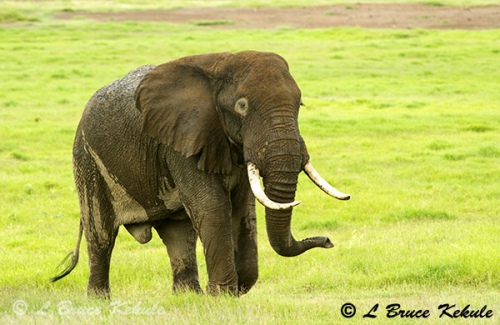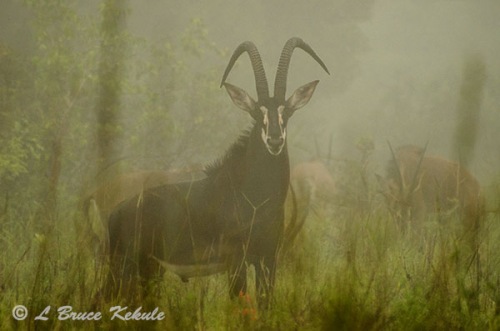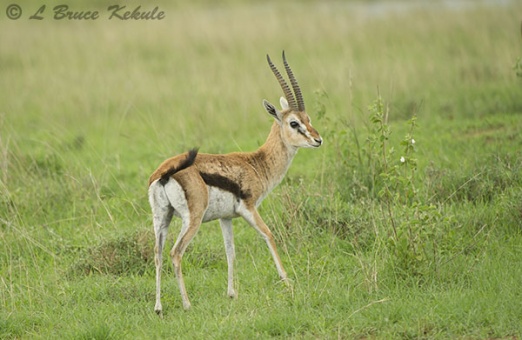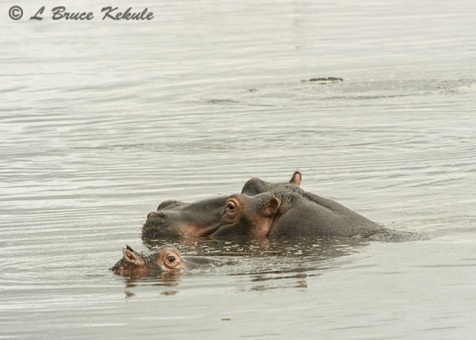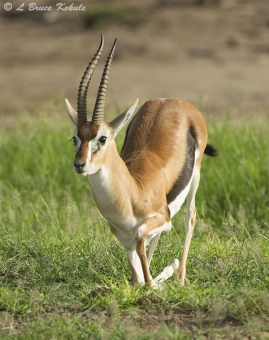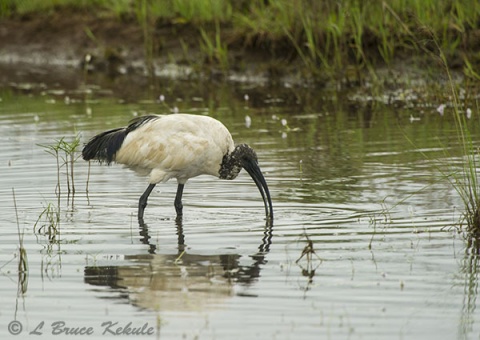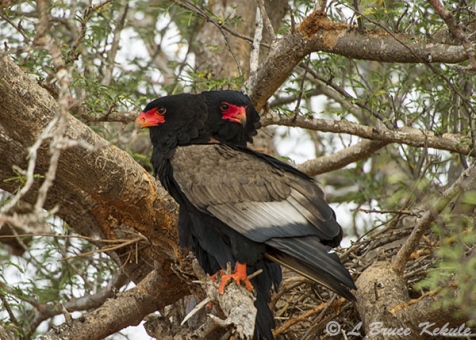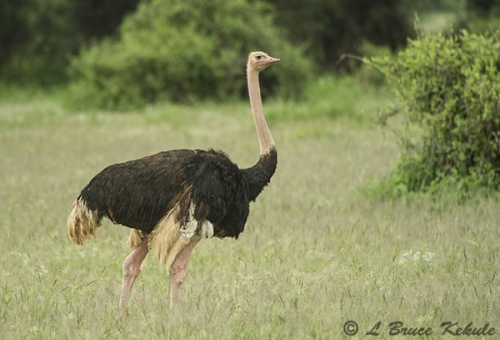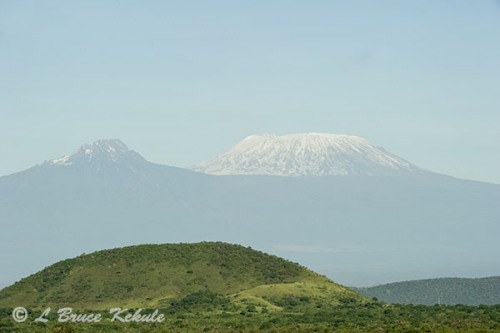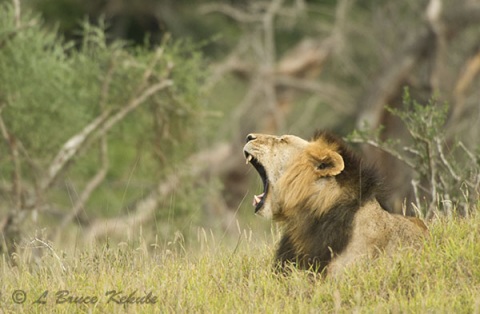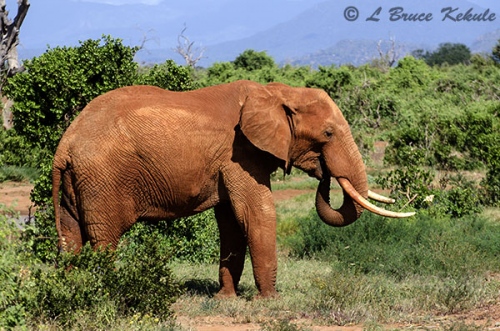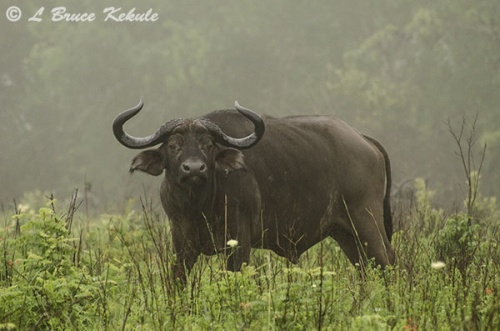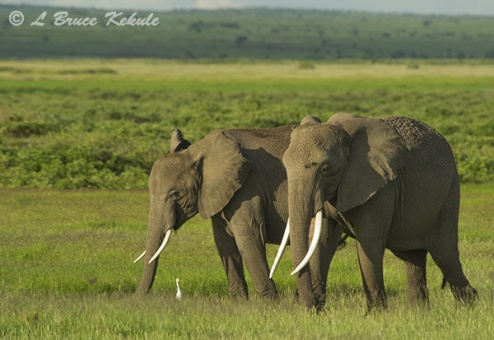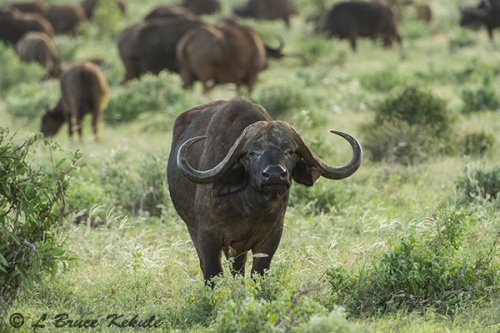Posts Tagged ‘African mega species’
African wildlife in Southern Kenya
African Safari in May 2012 – Part Two
Africa is not just about the ‘Big Five’. It’s also about all the other amazing creatures and ecosystems that make up the tremendous biodiversity of flora and fauna found here.
Bull elephant just after a rain in Amboseli National Park
It can be said that Kenya is one of the most diverse and best-protected wildlife habitats anywhere in the world where tourists and photographers alike can consistently see and photograph wild animals up-close for the most part.
Striped hyena in Tsavo (East) National Park
However, some of Kenya’s wildlife is not that easy to spot like the rare striped hyena or sable antelope, while others are downright easy such as elephants and buffalo for example.
Sable antelope male in the mist at Shimba Hills Wildlife Sanctuary
Some species have become so habituated to safari vehicles and its occupants, especially lion and cheetah. Most times the big cats simply ignore you. But not all these animals are that tame like the elusive leopard, or even antelope like eland.
Eland bull in Nairobi National Park
Some creatures flee at the first sight of a vehicle and man (years and years of poaching pressure) knowing very well that retreat is the only safe course of action, and humans are not to be trusted.
Bat-eared fox near dusk in Amboseli
Hence, it is not always that easy as some might surmise. It’s about luck too. Some days are stellar while others are just mediocre. But for the most part, it is a photographers dream come true..!
Rock hyrax in Tsavo (West) National Park
While on safari, I shoot everything I see (through the lens of course) until I’m satisfied I have the shot, or the animal has left the scene.
Rock hyrax family in Tsavo
Over the past three years, I have made three trips to the ‘Dark Continent’ and you could say I’m addicted to the place. This trip I visited Amboseli and Tsavo national parks near Mount Kilomanjaro, Taita Wildlife Sanctuary nearby and Shimba Hills Wildlife Sanctuary near the southern coastal city of Mombassa plus Nairobi National Park over two weeks.
Lioness during late afternoon in Tsavo (East) National Park
I traveled some 3,00o kilometers with my good friend and guide/driver, Patrick Mjoroge, a Kenya national. With more than 25 years of experience, he has been an important asset in my photographic quest.
Lioness on the run after prey in Tsavo
Transworldsafaris.com in Nairobi have also been very helpful in setting up my trips. They are truly one of Kenya’s best safari companies and I recommend them to anyone interested in going.
Another giraffe male in Tsavo (East)
I now have accumulated quite a lot of photographs for an up-coming book project about wildlife in Asia and Africa showing a comparison between the two continents.
Giraffe during late afrternoon in Shimba Hills
At the end of the day, the game of wildlife photography is all about how lucky you are. What is around the next bush or bend in the road is the big question?
Zebra taking it easy in Amboseli
I have been very fortunate to visit Kenya but consistency, good photographic technique and equipment plus determination is the real secret to successful wildlife photography, whether it’s in Africa, Asia or the U.S. for that matter.
Thompson’s gazelle in Nairobi
Shortly (December 5th), I leave for Kenya once more (3-week trip) and hope I can close out a few more species still not in the bag like kudu and wild dog that have been very elusive.
Hippo mother and calf in Amboseli
It is hoped all will take pleasure in this photo essay as much as I have writing and photographing it. Enjoy…!
Additional photos while on safari in May:
Nile crocodile in Tsavo (West)
Cheetah on the prowl in Amboseli
Cheetah family in Amboseli
Cheetah on the run in Amboseli
Red hartebeest in Taita Wildlife Sanctuary
Thompson’s gazelle in Amboseli
Black-headed heron in Amboseli
Sacred ibis in Nairobi
Bateleur pair in Tsavo (East)
Glossy ibis in Tsavo (West)
Ostrich in Nairobi
Marabou stork in Tsavo (West)
Grey-headed crane in Amboseli
African fish eagle in Amboseli
Ground hornbills in Tsavo (West)
Sable male in Shimba Hills
Sable female and calf in Shimbe Hills
Cape buffalo in Nairobi National Park
Africa’s Big Five: Three times lucky…..!
In 2010 and 2011, I was extremely lucky to visit Kenya in East Africa to photograph the ‘Big Five’ including elephant, white rhino, buffalo, lion and leopard plus many other species in several protected areas including the Masai Mara, Lake Nakuru and Samburu national reserves plus Sweetwaters private reserve in the west and central areas of Kenya.
Mt. Kilomanjaro seen from Amboseli National Park.
This year in May, it was decided with the safari company to go south this time to some new but very famous protected areas including Amboseli and Tsavo (West and East) national parks near Mount Kilomanjaro on the border with Tanzania. I also visited Shimba Hills and Taita wildlife sanctuaries and finally Nairobi National Park near the city of Nairobi.
Mt. Kilomanjaro seen from Tsavo (West) National Park.
The highlight of this trip was catching a black-mane lion in the grasslands of Taita Wildlife Sanctuary on my way back to Nairobi near the end of my trip. A very luck encounter and a dream come true….!
Black-mane lion in Taita close to dusk.
Lazy lion yawning and showing his canines.
Then I was also extremely lucky to catch an elusive black rhino mother and her calf in Nairobi National Park on the last day of the safari. They were reintroduced from South Africa. These massive beasts are tough to see let alone photograph…!
Black rhino mother and calf down in a gully.
Another shot of the pair higher up on the ridge.
In most of the parks in Kenya, elephant and buffalo are common and easy to see and photograph. However, in Tsavo National Park, the world’s largest protected area, both species are red from the earthen clay found here and they stand-out. I spent six days in both sections of Tsavo and it was an amazing adventure.
A bull elephant in Tsavo (West) National Park.
Another red bull in Tsavo (East) National Park.
A Cape buffalo bull in Tsavo (East).
Then, I headed further south to the mist shrouded jungles of Shimba Hills near the southern port city of Mombassa on the coast. Here elephant are gray and buffalo are black as normal with other parts of Kenya.
Young elephant in Shimba Hills. This bull is in musth, a state where male elephants can be very aggressive. Note fluid draining from the temporal gland.
A Cape buffalo bull with an unusual set of horns in mist shrouded Shimba Hills.
Over the course of two weeks, I traveled more than 3,000 kilometers with my good companion, driver and guide Patrick Mjoroge, a Kenyan national with a good heart and loads of experience (more than 25 years) to help me get the best possible opportunities for photographing wildlife. He is an ‘eagle eye’ and saw the wild cat and jackal hanging in a leopard’s tree in Tsavo (East).
Leopard’s prey: A wild cat and a black-backed jackal.
My leopard camera trapped eating the jackal in Tsavo (East).
This was simply an amazing feat which allowed me to camera trap the leopard previously published under ‘A needle in the haystack’ and to make-up the ‘Big Five’ once again. Three times lucky I guess.
Me and Patrick in Taita Wildlife Sanctuary.
I’m now in the process of planning a forth visit to Kenya in early December. It will be another two-week trip down south hopefully to catch some more species that I still do not have like kudu and wild dogs. I’m working on a forth book about wildlife in Asia and Africa as a comparison, and hope to be finished sometime next year. That’s the plan anyway..!
Hope ya’ all will enjoy this post. Another post to follow on all the other species I collected in the two-week period.
Additional photos of the ‘Big Five’:
Lone lioness found in the savannah during mid-day in Nairobi National Park.
Elephants in Amboseli National Park.
Cape buffalo in Amboseli.
Mother elephant and baby in Amboseli. These are the longest tusks I have ever seen on an African elephant. This place is well protected with a mandate of ‘shoot to kill’ any poachers.


